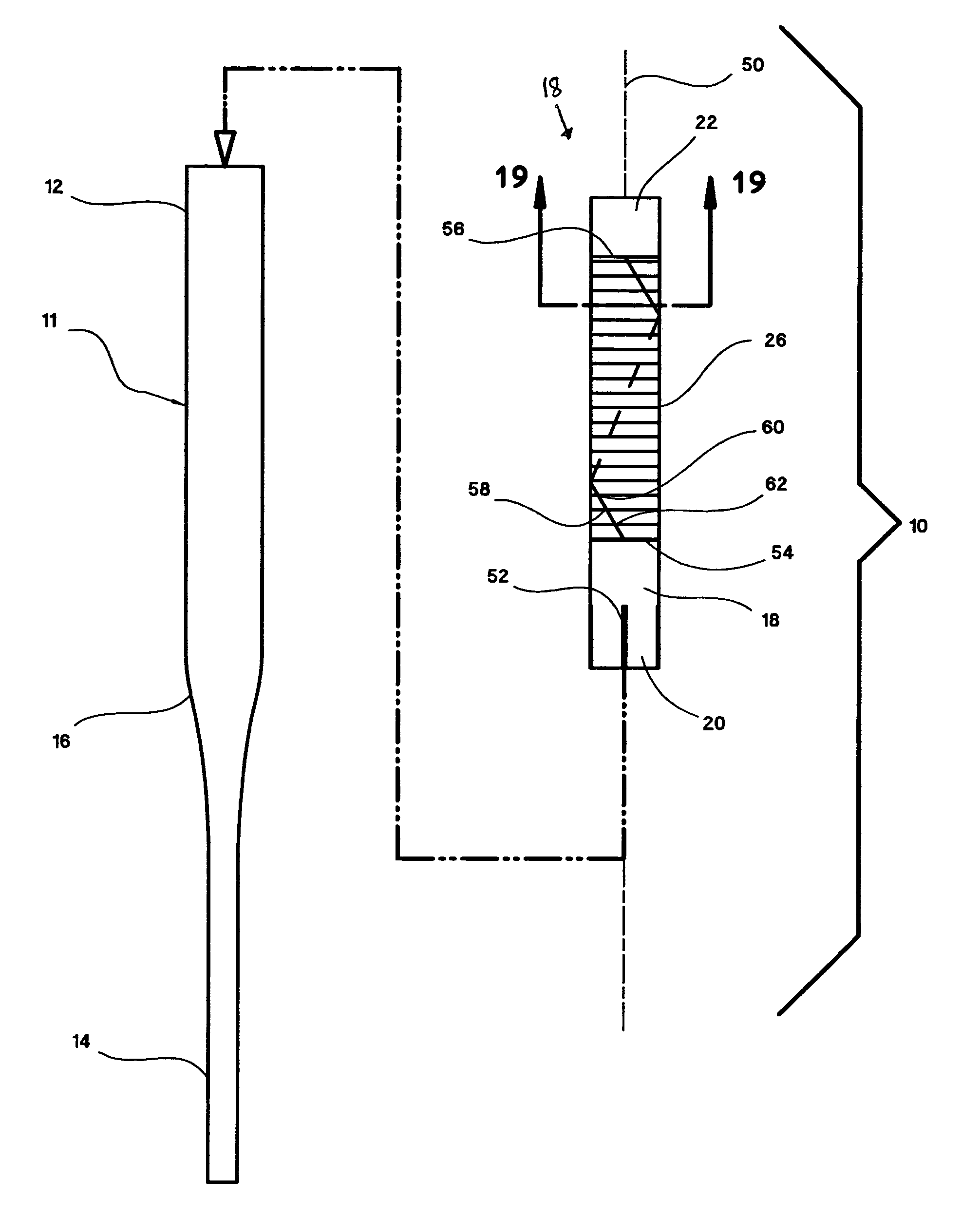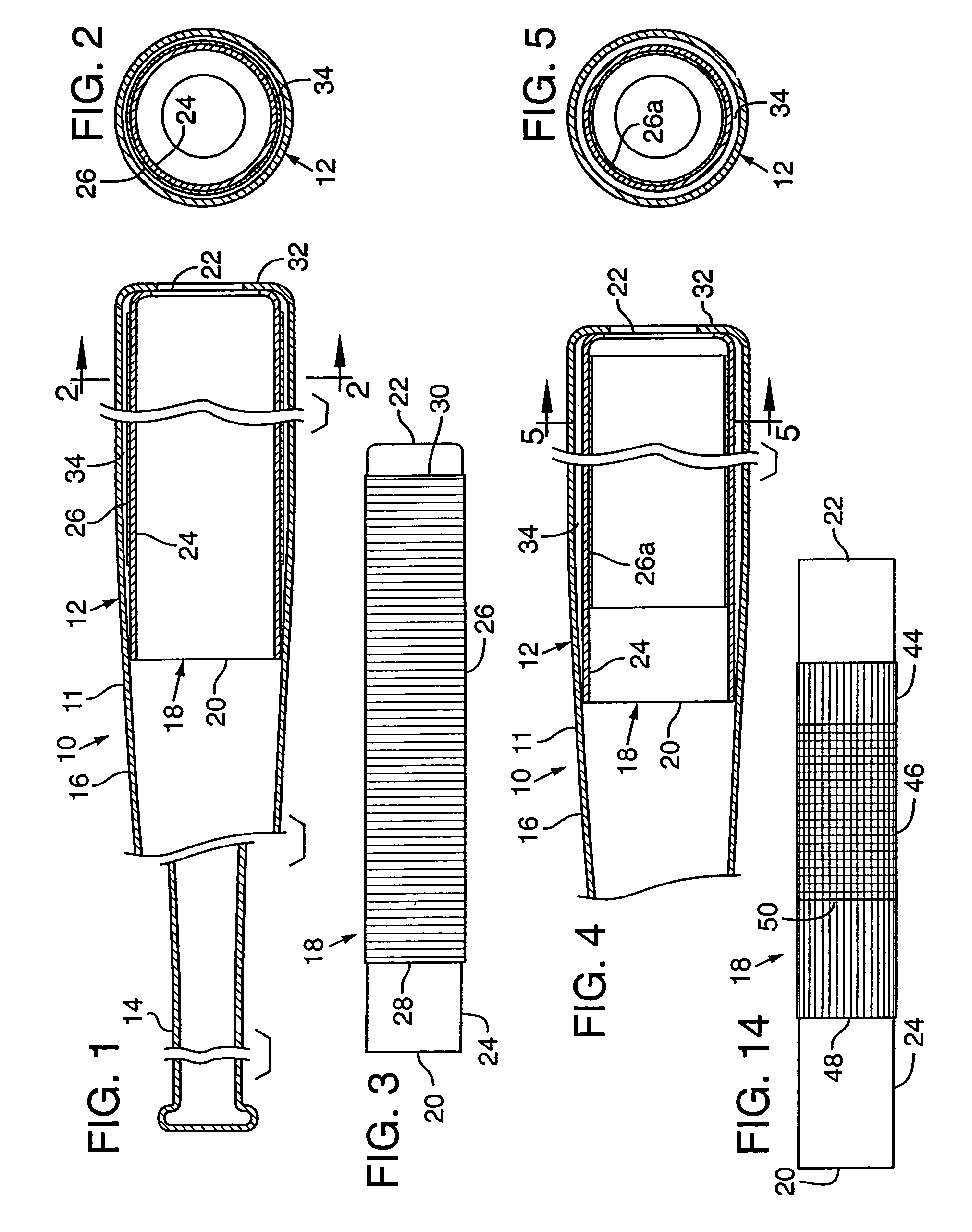Insert for a bat having an improved seam orientation
a seam orientation and inserting technology, applied in the field of inserting for ball bats, can solve the problems of undesirable local plastic deformation, too stiff to achieve optimum slugging performance, adverse effect of bat performance, etc., and achieve the effect of reducing bat performance, superior durability characteristics, and reducing the number of inserts
- Summary
- Abstract
- Description
- Claims
- Application Information
AI Technical Summary
Benefits of technology
Problems solved by technology
Method used
Image
Examples
Embodiment Construction
[0050]Referring to FIG. 1, a tubular bat 10, according to one embodiment of the present invention, has a tubular frame 11 with a relatively large constant-diameter impact portion 12, a relatively small diameter handle portion 14, and an intermediate tapered portion 16 that extends between the handle and impact portions. The impact portion 12 is “tubular” or “substantially tubular,” terms intended to encompass softball style bats having a substantially cylindrical impact portion (or “barrel”) as well as baseball style bats having a substantially conical (or “frustum-like”) barrel.
[0051]The tubular frame 11 engages a tubular insert 18 within the impact portion 12. The bat 10 provides two essentially parallel walls in the “hitting zone” or barrel region. The insert 18 is restrained within the tubular frame 11 either by retaining the ends of the insert in place or at least trapping the insert within the barrel to permit some axial movement. As shown in FIG. 1, for example, a first end 2...
PUM
 Login to View More
Login to View More Abstract
Description
Claims
Application Information
 Login to View More
Login to View More - R&D
- Intellectual Property
- Life Sciences
- Materials
- Tech Scout
- Unparalleled Data Quality
- Higher Quality Content
- 60% Fewer Hallucinations
Browse by: Latest US Patents, China's latest patents, Technical Efficacy Thesaurus, Application Domain, Technology Topic, Popular Technical Reports.
© 2025 PatSnap. All rights reserved.Legal|Privacy policy|Modern Slavery Act Transparency Statement|Sitemap|About US| Contact US: help@patsnap.com



